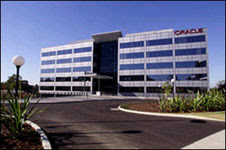There's been a lot of talk about the highly-anticipated 3g iPhone release last week. I queued up and got my hands on a 16gb Black model Thursday night and am very happy with the device. A lot of organisations are preparing to release their applications for the iPhone, taking advantage of a. the wider release and availability and b. the significantly faster connectivity provided through 3g.
Dennis Howlett, a long-time critiquer of Oracle's products, spoke last week on his blog about the first of our iPhone applications - Business Indicators. He found it 'hard to fault the company for piggybacking on a platform that is getting plenty of attention. Even better that it is offered as a free download'. Thank you Dennis!
Oracle's new applications are focussed on the business intelligence world where key decision makers require up-to-date access to critical business information. Te new applications allow finger-tip access to key business metrics and analytical data - Oracle is clear in saying that the iPhone solution is NOT intended to replace a complete user dashboard experience. The application, known as Oracle Business Indicators, uses the service-orientated-architecture (SOA) capabilities of OBIEE and Oracle Business Intelligence web services to access reports and metric data from within the OBIEE catalogue. Access to custom reports from this environment are not yet available. Security and access controls are also managed by OBIEE - this is the same solution for more traditional desktop users.
Coming soon will be applications that manage the 'Approval' of information - suitable for purchasing, recruitment and expense reporting. Also, to follow will be applications that support CRM and ERP environments amongst others. One of Oracle's competitors released their version of the BI application for the Blackberry in 2007. One of the key differences is the platform of course, Blackberry's are generally provided by an organisation to an individual whilst the iPhone has been traditionally procured by individuals. In a world where form-factor is as important as functionality - user-experience with the large touchscreen with be preferred to the smaller displays offered by Blackberries. The development kit provided by Apple for the iPhone will also be a strong reason why we may see iPhones becoming common tools within the corporate world.
Paul
The Oracle Australia and New Zealand Middleware and Technology Blog.
Tuesday, July 15, 2008
Subscribe to:
Post Comments (Atom)


No comments:
Post a Comment